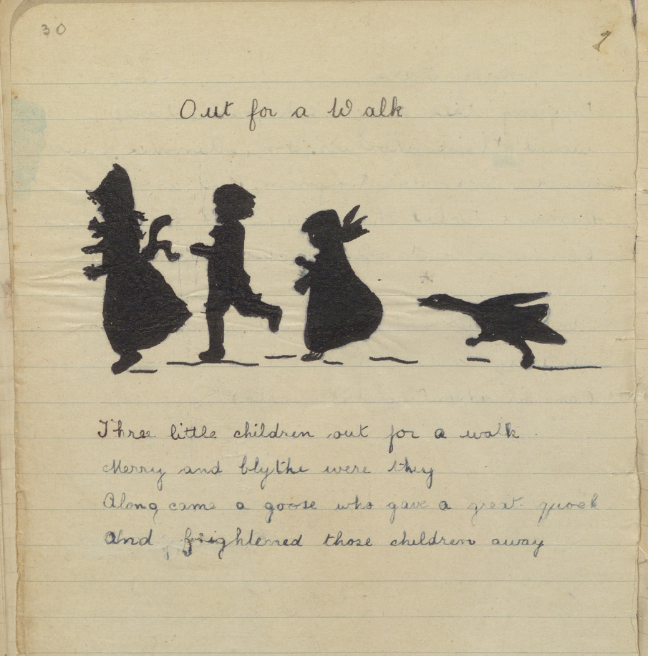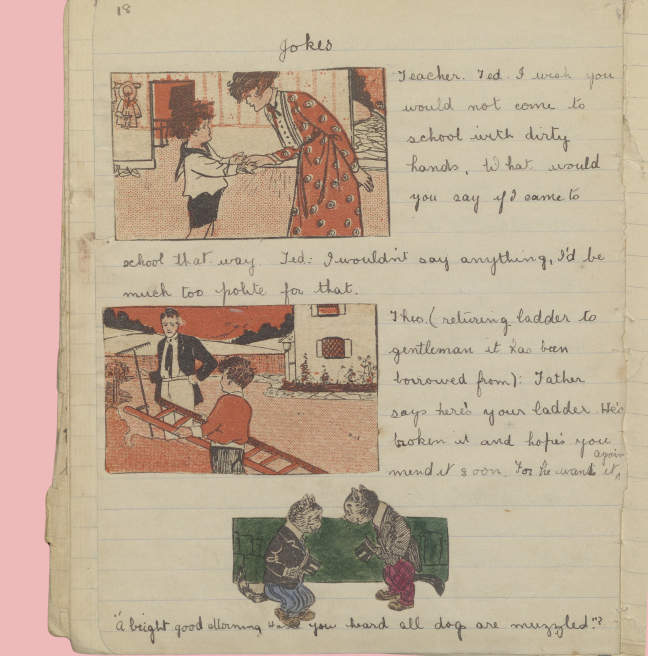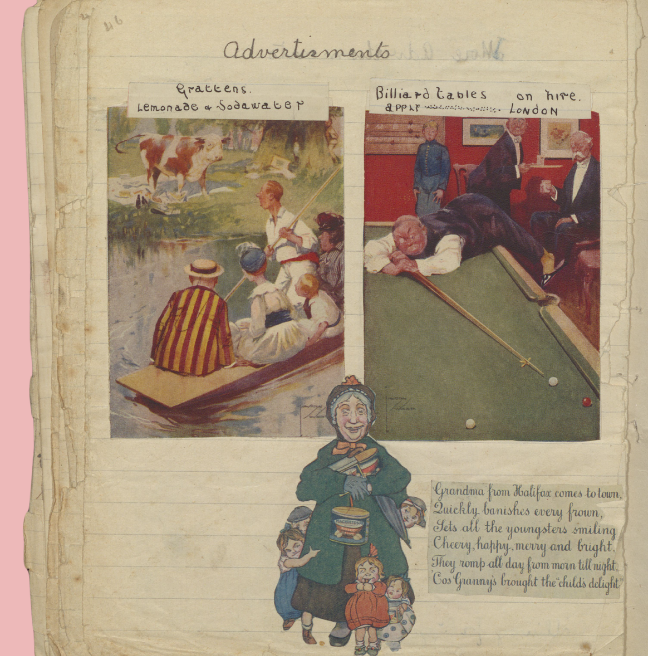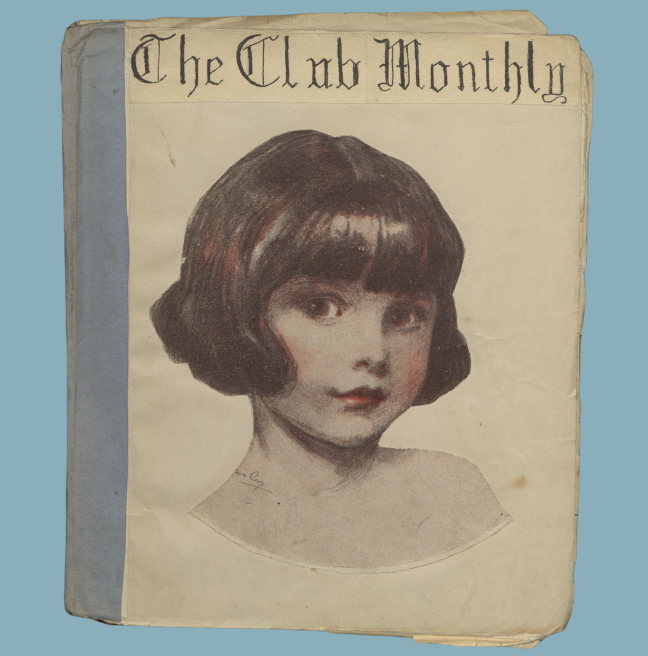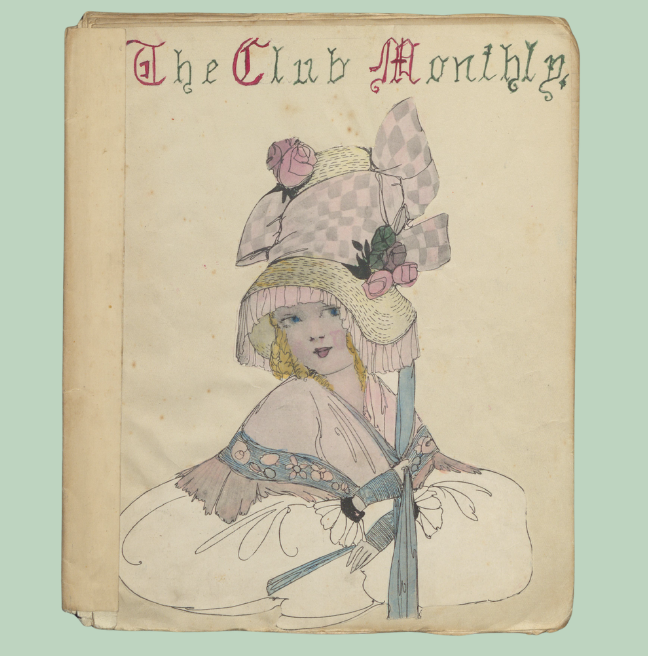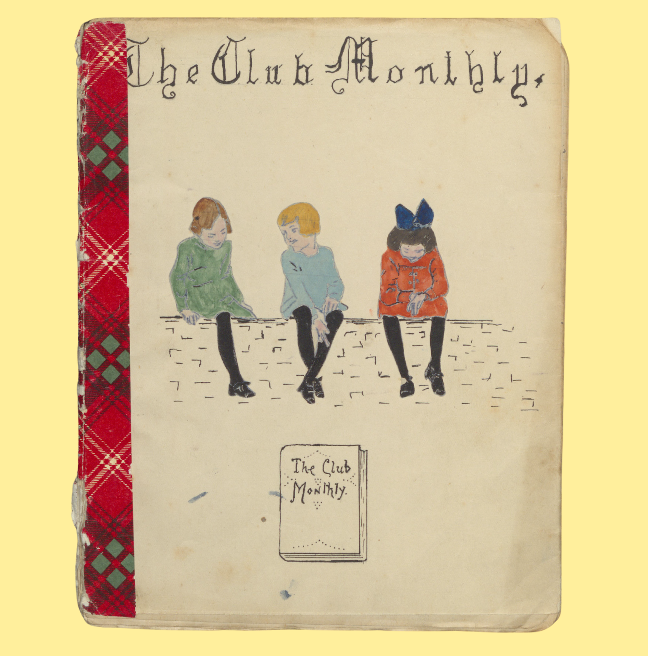It all began at bedtime. Joanie didn't want to have to go to bed or have a bath but nurse dragged her upstairs against her will and undressed her; popped her into the bath and washed her very gently, then put her into bed. She left a little night light burning beside her, kissed 'her wee pet' and waddled downstairs.
"I don't want to go to sleep and shan't" said Joanie. "I'm seven + a half now and I have to go to bed at 6. 30 o'[clock], it's not a bit fair". She sat up and rubbed her eyes and yawned.
"What a nuisance to have to go to bed, how I wish I lived in no bed-time land".
"Whose speaking" said a snaky voice at the far corner of the room.
"Just me" said Joanie very much frightened.
"What did you say just then?" said the voice again.
"I said I wanted to live in no-bed-time-land" said Joanie still more frightened.
"Come on" said the voice and Joanie had to obey. She rose and dressed and the voice appeared, "Take my arm" it said but as it was invisible Joanie could not see it.
They walked for a long time then came to a big place where everybody's papa + mama +nannie was. They were all talking and yawning. The 'voice' sat down and so did Joanie. "How I wish I were in bed" said Joanie yawning again and again. Suddenly she rolled away and fell thump to the floor.
Nurse came in at that moment and found her, put her back in bed.
"O what was I dreaming about" said Joanie. "Never mind" said nurse as she tucked her up.
Of course she never knew!!!!









